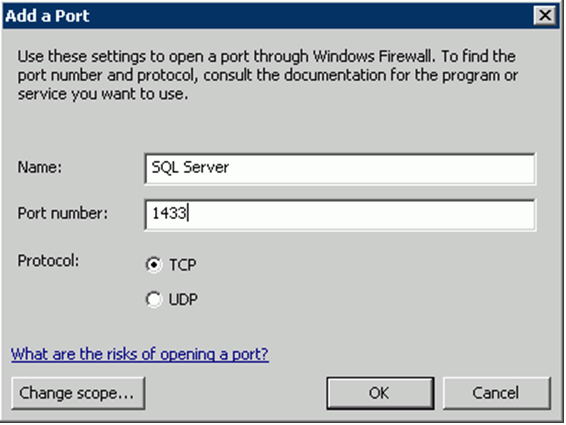Setting Up Windows Firewall in Windows Server 2008
By default, Windows Server 2008 has the Windows Firewall turned on. This default firewall prohibits Server Manager from being fully functional. Additionally, the Server Manager Agent may not work correctly unless you follow these procedures.
In Windows Server 2008, open Windows Firewall.
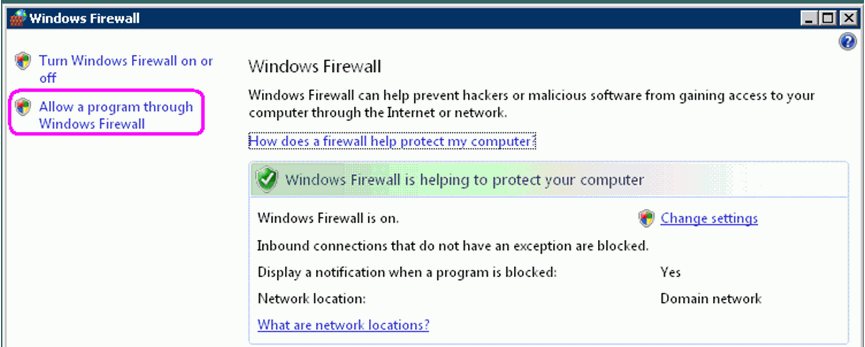
On Windows Firewall, in the left-hand pane, click this setting:
Allow a program through Windows Firewall
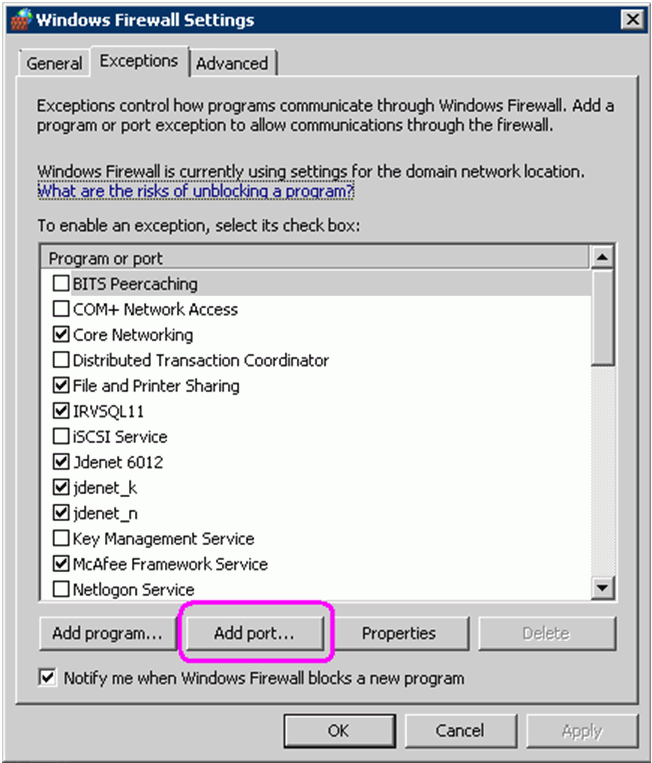
On Windows Firewall Settings, on the Exceptions tab, click the Add Port button.
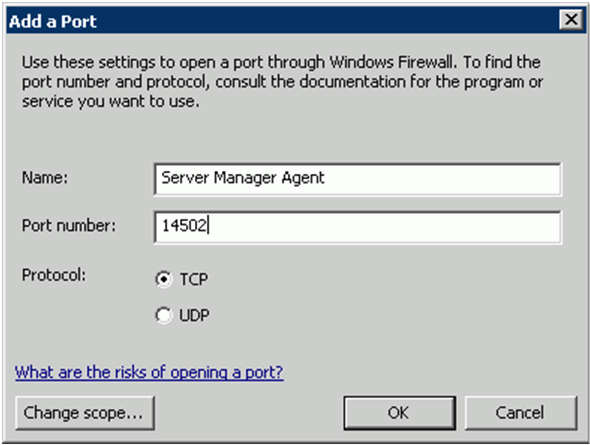
On Add a Port, complete these fields to add a port for the Server Manager Agent:
Name
Enter this value:
Server Manager Agent
Port Number
Enter this value:
14502
Protocol
Choose the radio button for this value:
TCP
Click the OK button.
Repeat Steps 3 and 4 to add another Server Manager port.
On Add a Port, complete these fields to add a port for the Server Manager JMX connection:
Name
Enter this value:
Server Manager JMX Port
Port Number
Enter this value:
14501
Protocol
Choose the radio button for this value:
TCP
At this point, if not already installed, you can install the Server Manager Agent for Microsoft Windows as described in the Server Manager Guide, in the section entitled: Installing the Server Manager Management Console and Agent.
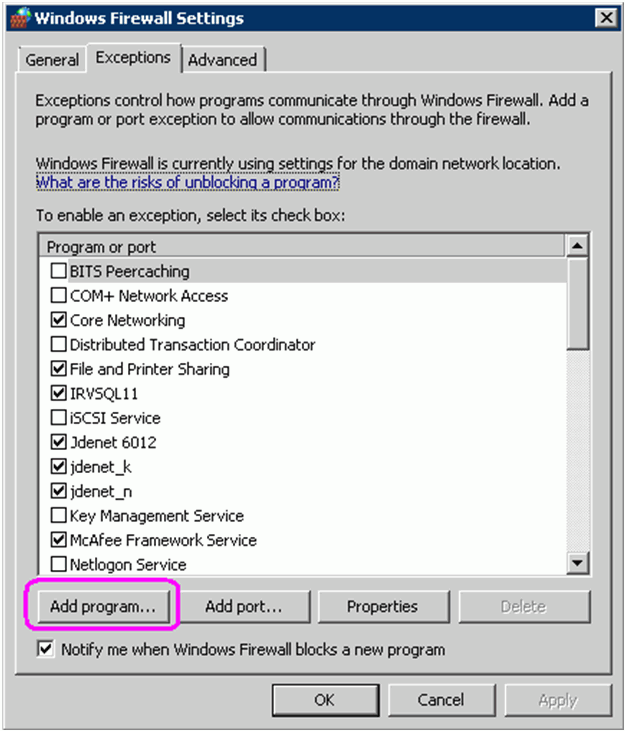
On Windows Firewall Settings, on the Exceptions tab, click the Add Program button.

On Add a Program, browse the list and locate this program:
scfagent
Click the OK button.
At this point, if not already installed, you can install a Managed Instance for the Enterprise Server as described in the Server Manager Guide, in the section entitled: Register or Create a JD Edwards Enterprise Server as a New Managed Instance.

On Windows Firewall Settings, on the Exceptions tab, click the Add Port button.
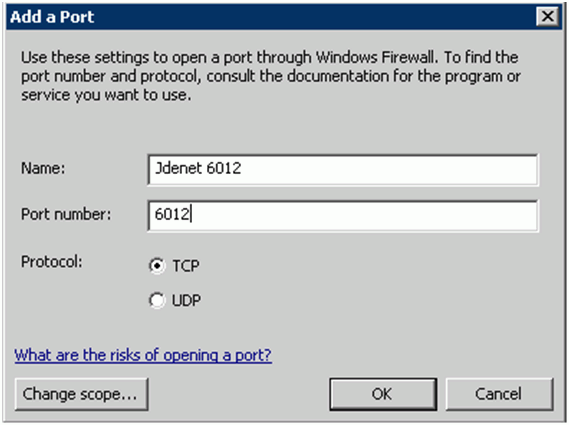
On Add a Port, complete these fields to add a port for the Server Manager Agent:
Name
Enter this value:
JDENET <port>
where <port> is a variable value for JDENET corresponding to the JD Edwards EnterpriseOne Applications Release. See description below for valid values.
Port Number
Enter this value:
<port>
where <port> is a variable value for JDENET corresponding to the JD Edwards EnterpriseOne Applications Release. For example, the default values per release are listed in this table:
JD Edwards Application Release
Default JDENET Port Value
9.0
6015
9.1
6016
Protocol
Choose the radio button for this value:
TCP
On Windows Firewall Settings, on the Exceptions tab, highlight the jdenet_k program and click the Add Program button.
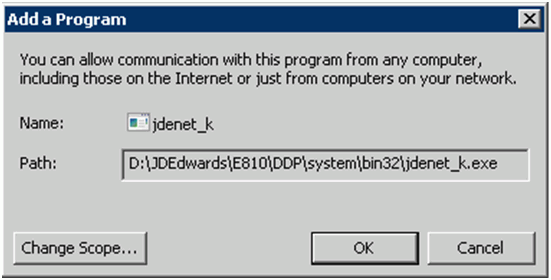
On Edit a Program, verify the values in these fields are correct for jdenet_k:
Name
jdenet_k
Path
Path to the jdenet_k.exe program. For example:
D:\JDEdwards\E810\DDP\system\bin32\jdenet_k.exe
Click the OK button to accept the values.
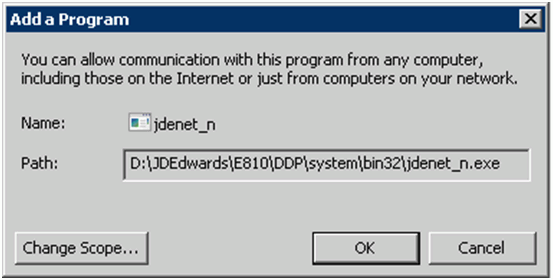
Repeat Steps 14 through 16 above, substituting jdenet_n.exe for jdenet_k.exe.
Optionally, if the database for your JD Edwards EnterpriseOne applications reside on a different machine than the Enterprise Server, you must repeat the applicable steps above to add a port for that database. You may need to check with your DBA or database vendor documentation to determine the applicable port.
The below example shows the typical database port for SQL Server 2008.
